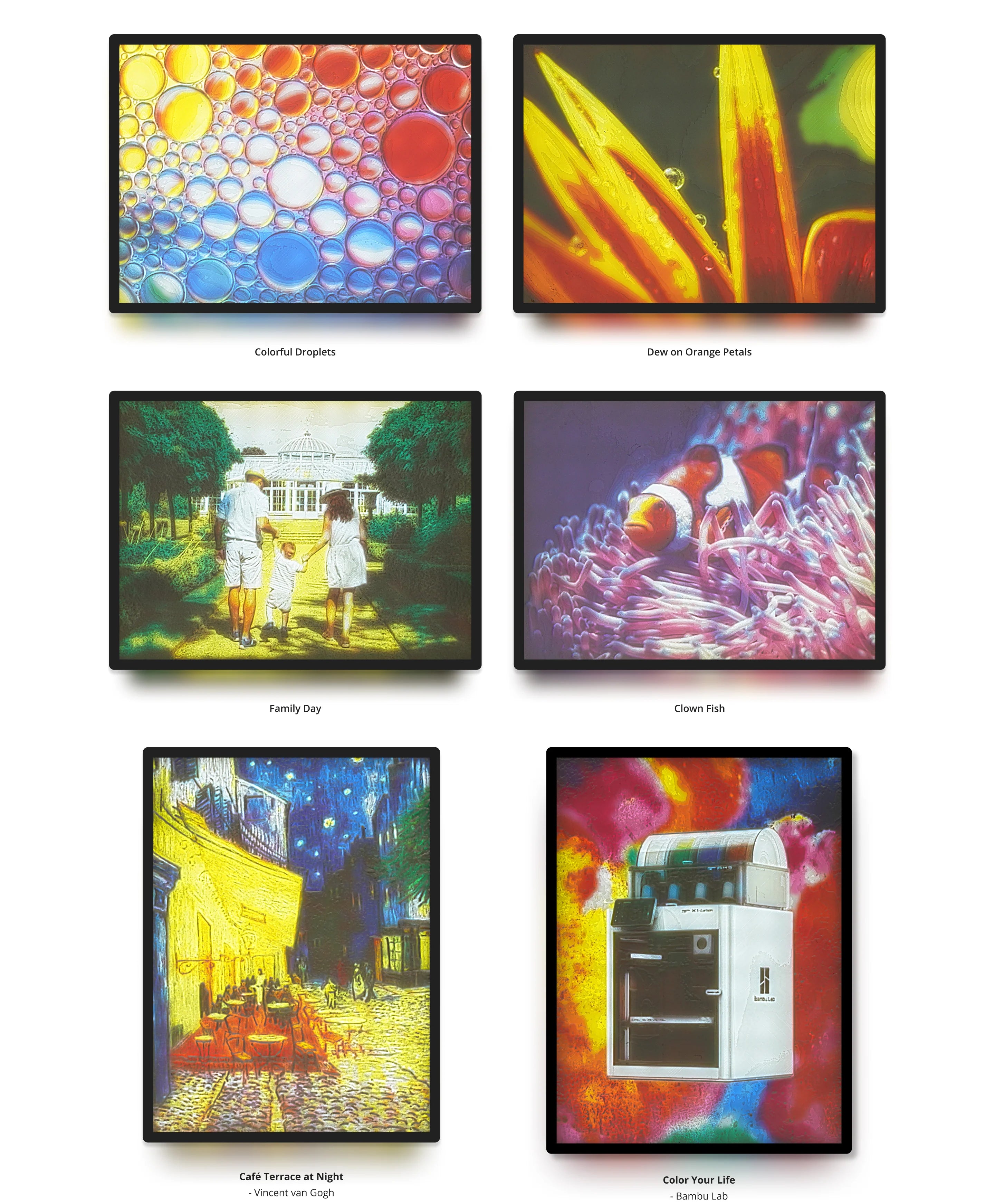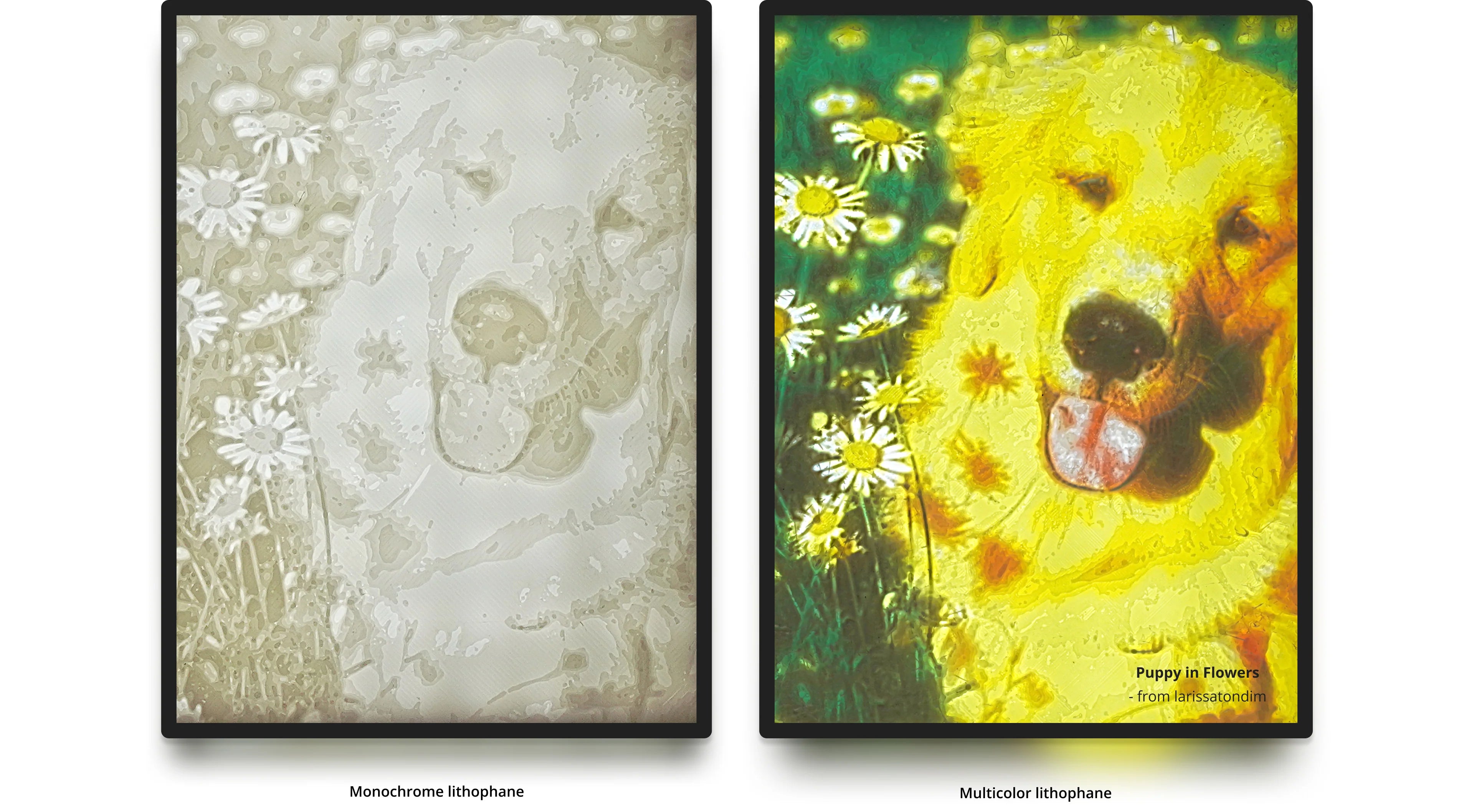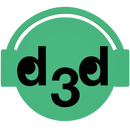Bambu CMYK LED Backlight Board
No se pudo cargar la disponibilidad para recoger
Use this text to encourage communication or promote sharing on social networks.
Cautions for Optimal Use
- Do not contact the board surface with metal when plugging in to prevent short-circuits.
- Avoid pressure on the light beads to prevent damage.
- Charging interface: USB-C (please use USB-A adapter)
Product Information
|
Size |
156 mm*120 mm |
|---|---|
| 144 mm*108 mm (Light Bead Aera) | |
| Light Type | LED |
| Power Source | Corded Electric |
| Power Port Type | USB-C |
| Light Color | White |
| Bead Count | 99 |
| Wattage | 5W |
| Temperature during Operation | 70 ℃ |
| Weight | 59g |
Acknowledgement
We would like to send our sincere thanks to Lithophane Maker, who made great contributions to the lithophane printing groups. It has never been easier to create stunning color lithophanes that will leave a lasting impression with their amazing image-to-stl generator.
Bring colors to your lithophane

Quick Walkthrough
Get your printer ready
| Printer with AMS | Bambu Lab Printers |
|---|---|
| AMS (Automatic Material System) | |
| Filaments (Hexcode#) | PLA Basic Cyan #0086D6 |
| PLA Basic Magenta #EC008C | |
| PLA Basic Yellow #F4EE2A | |
| PLA Basic Jade White #FFFFFF | |
| Nozzle | 0.2 mm (Recommended) |
| or 0.4 mm | |
| Build Plate | Bambu Cool Plate |
| Bambu High Temperature Plate (PEI) | |
| Bambu Dual-Sided Textured PEI Plate |

How to Create Colorful Lithophanes
Using the Bambu Lab printer and its AMS (Automatic Material System), you can transform a simple image into a beautiful color lithophane with ease.
Step 1: Preparing Your Image
First, head over to lithophanemakers.com. This site allows you to create various types of lithophanes including color lithophanes.
Upload Your Image
Click on the button to upload the picture you want to turn into a lithophane.
Size Your Image
Adjust the size to fit the Bambu Lab frame, which is available for free online. Set the width to 144mm and the height to 108mm.
Crop Your Image
Check the crop box in the top left corner, and use the X and Y shift adjustments to focus on the part of the picture you want.
Set Layer Height
Set the first layer height to 0.15mm.
Step 2: Preparing for Printing
Once the zip file downloads, extract it. You should find five STL files and one text file. Open your Bambu slicer or Orca slicer and drag these five color STL files into the slicer. When prompted, choose to import them as one object.
Step 3: Loading Filaments
Make sure all four CMYK colors are loaded in the AMS of your Bambu Lab printer. You can verify this in the device tab of your slicer software. Ensure each color is in the correct slot, and if needed, resync the AMS colors with the slicer.
For a step-by-step guide, check out the CMYK Lithophane Printing Guide.
Step 4: Slicing and Get the Lithophane Printed
• Nozzle Size: Use a 0.2mm nozzle for best results, although a 0.4mm nozzle with a 0.08mm layer height can also work. Smaller nozzle sizes and lower layer heights are essential to achieve better printing results.
• Layer Settings: Set the first layer height to 0.15mm and ensure the top and bottom layers are set to three each.
• Infill: Set the infill to 100%. Ignore the warning about going direct to linear.
• Select Your Plate: Choose your preferred build plate. To prevent warping, the recommended heated bed temperature is between 45-50℃.
In the objects tab, assign the correct color to each part. Use the keypad numbers 1 through 4 to match the AMS slots for each color. Once everything is set, hit the slice button and then send the file to your printer.
Step 5: The Finished Product
After printing, your lithophane might look like an ordinary one until you place it in front of a light source. The colors will illuminate beautifully, bringing your image to life. You can also print a frame, available for free from Bambu Lab, to hold your lithophane.
Download Frame and Light Guide Plate.
Step 6: Using the LED Light Panel
· Assemble the Frame: Slide the LED panel into the back of the frame, ensuring the USB-C port sticks out.
· Add the Diffuser: Print and insert the white diffuser into the frame.
· Insert the Lithophane: Place your lithophane in the front of the frame.
Connect the USB-C cable to a power source, and watch your lithophane light up in vibrant colors. You can easily swap out lithophanes to display different images.













